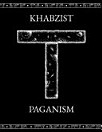The God of the Witches
eBook 정보
The attitude of all writers towards the post-Christian era in Europe, especially towards the Middle Ages, has been that of the ecclesiastic, the historian, the artist, the scholar, or the economist. Hitherto the anthropologist has confined himself to the pre-Christian periods or to the modern savage. Yet medieval Europe offers to the student of Mankind one of the finest fields of research.
In this volume I have followed one line only of anthropological enquiry, the survival of an indigenous European cult and the interaction between it and the exotic religion which finally overwhelmed it. I have traced the worship of the Horned God onwards through the centuries from the Palaeolithic prototypes, and I have shown that the survival of the cult was due to the survival of the races who adored that god, for this belief could not have held its own against the invasions of other peoples and religions unless a stratum of the population were strong enough to keep it alive.
If the evidence is carefully examined it becomes clear that this stratum consisted of the descendants of the Palaeolithic, Neolithic, and Bronze-age races, The Palaeolithic people were hunters, the Neolithic and Bronze-age people were pastoral and agricultural. Among all these races the Horned God was pre-eminent, for alike to hunting and pastoral folk animals were essential for life. After the general introduction of agriculture, the Horned God remained as a great deity, and was not dethroned even by the coming of the Iron-age. It was not till the rise of Christianity, with its fundamental doctrine that a non-Christian deity was a devil, that the cult of the Horned God fell into disrepute.







